Astronaut who realized 'big lie’ after spending 178 days in space explains how his view of the world has changed
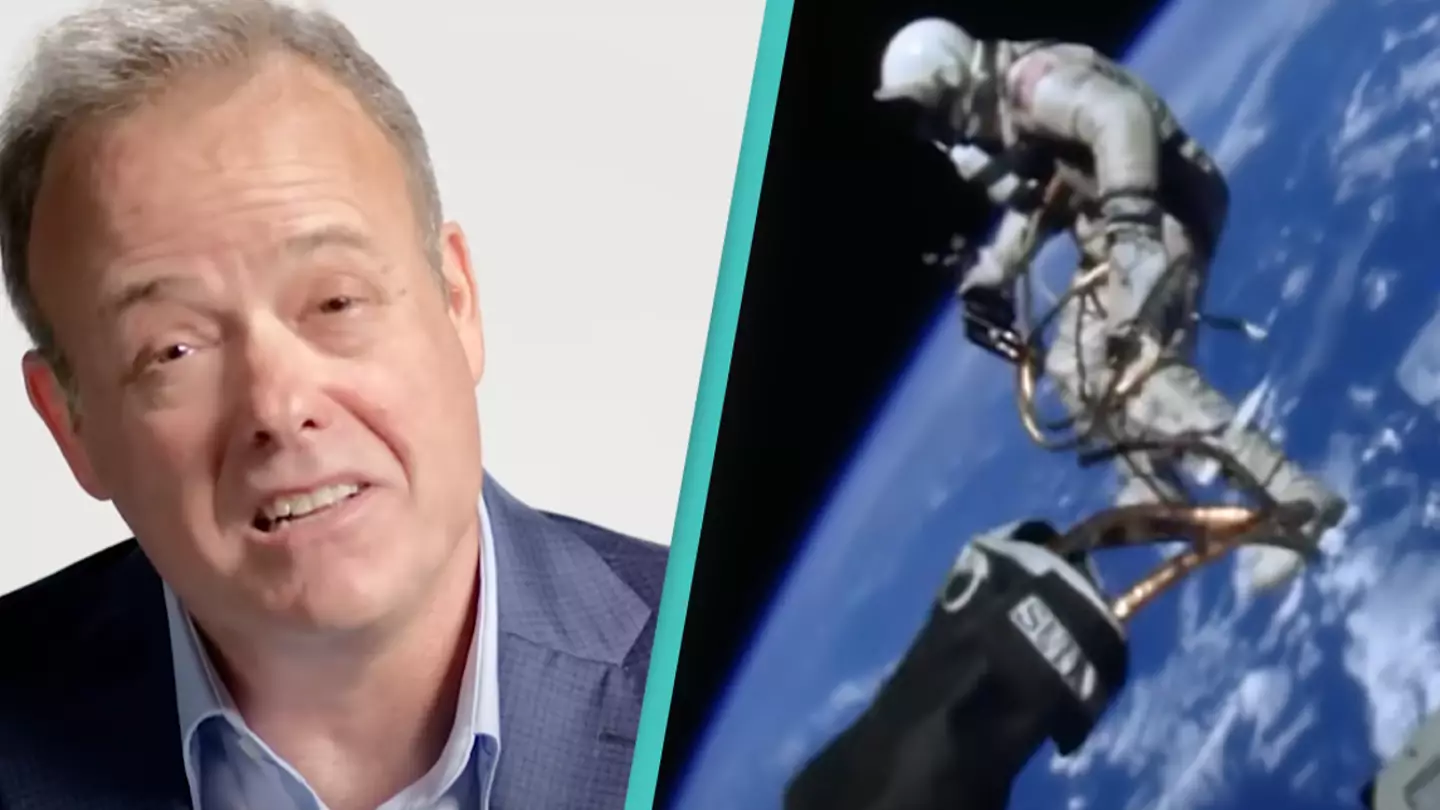
NASA astronaut Ronald Garan has orbited Earth 2,842 times during which he experienced the 'Overview Effect'
We're all 'living a lie', according to an astronaut that hurtled through space for a whopping 178 days.
I'm sure if we all spent that many days orbiting Earth at a speed of around 17,500mph then the way we see things would drastically change.
Well, it certainly did for the former NASA spaceman Ronald Garan who orbited our planet a staggering 2,842 times as he toured global shuttles - including the International Space Station (ISS).
Speaking to Big Think, he said: "When we see our planet from the perspective of space, certain things become undeniably clear.
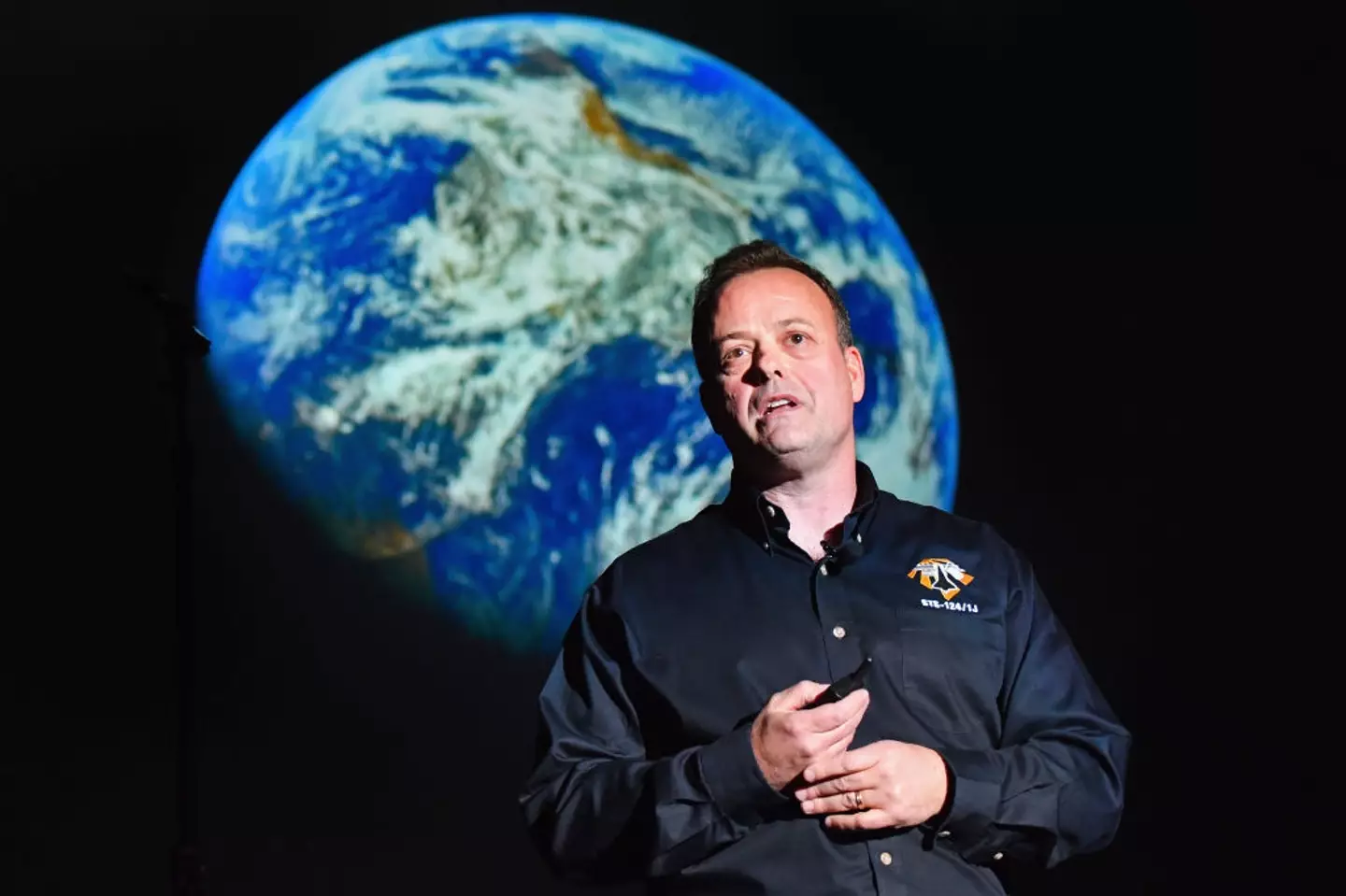

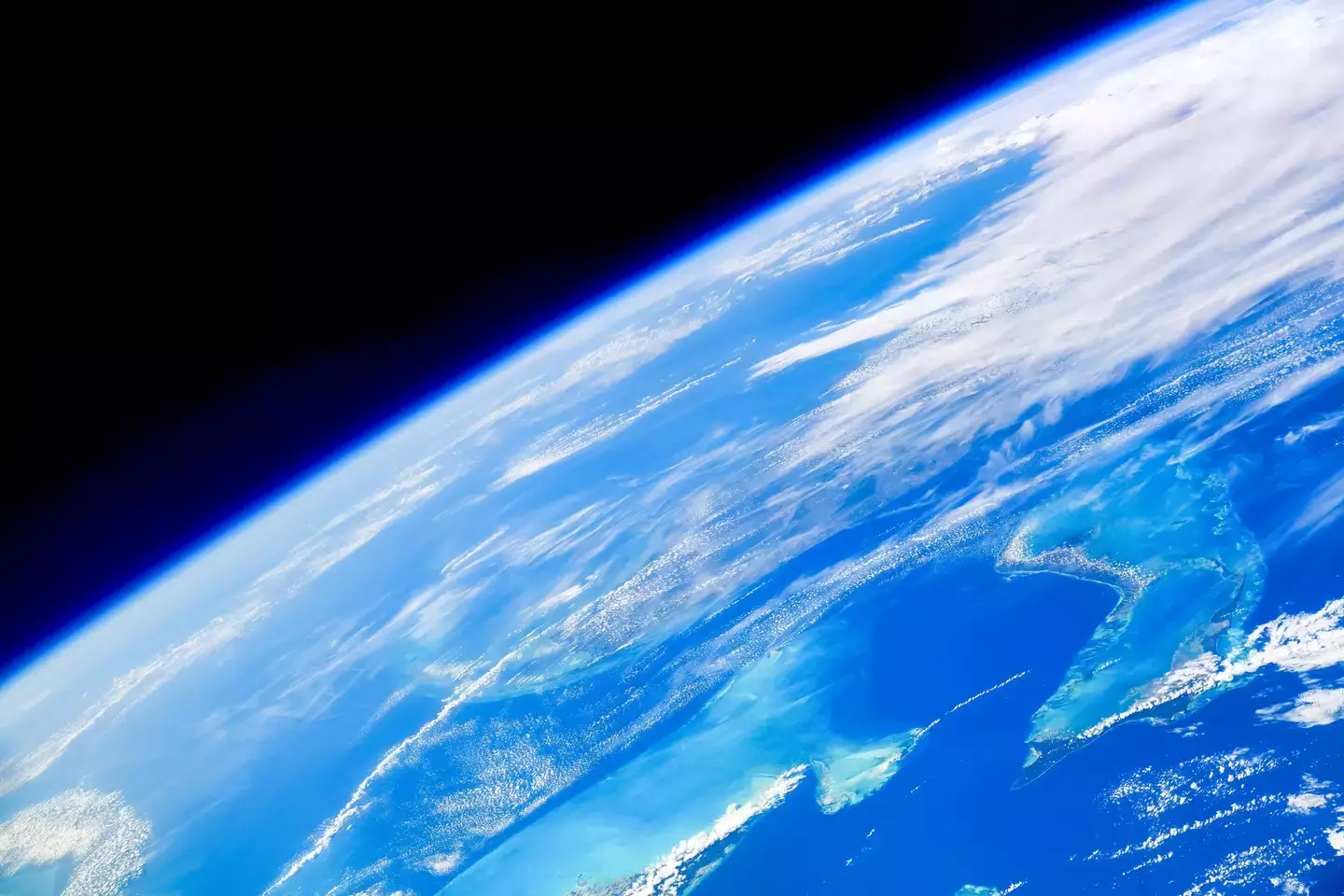
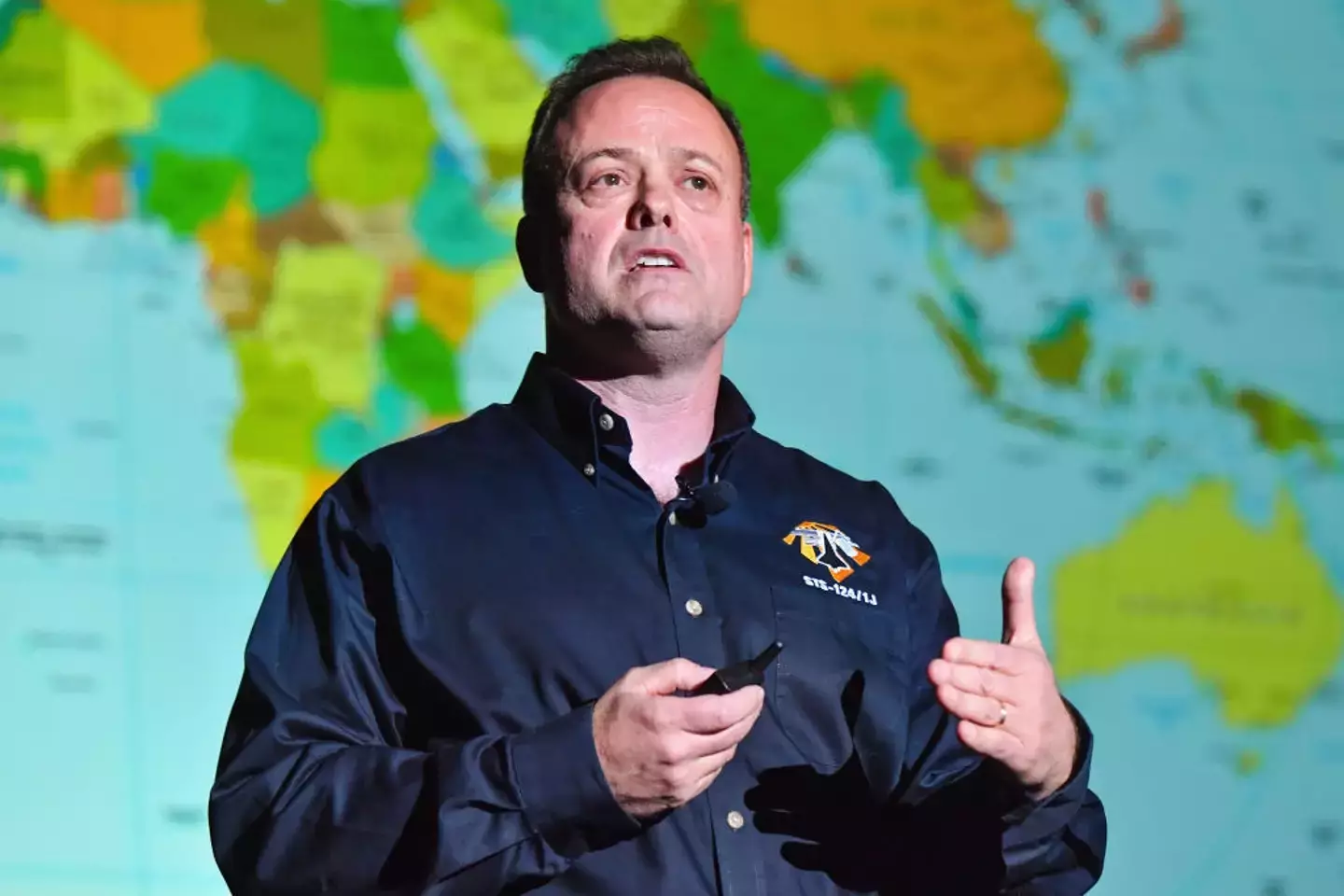
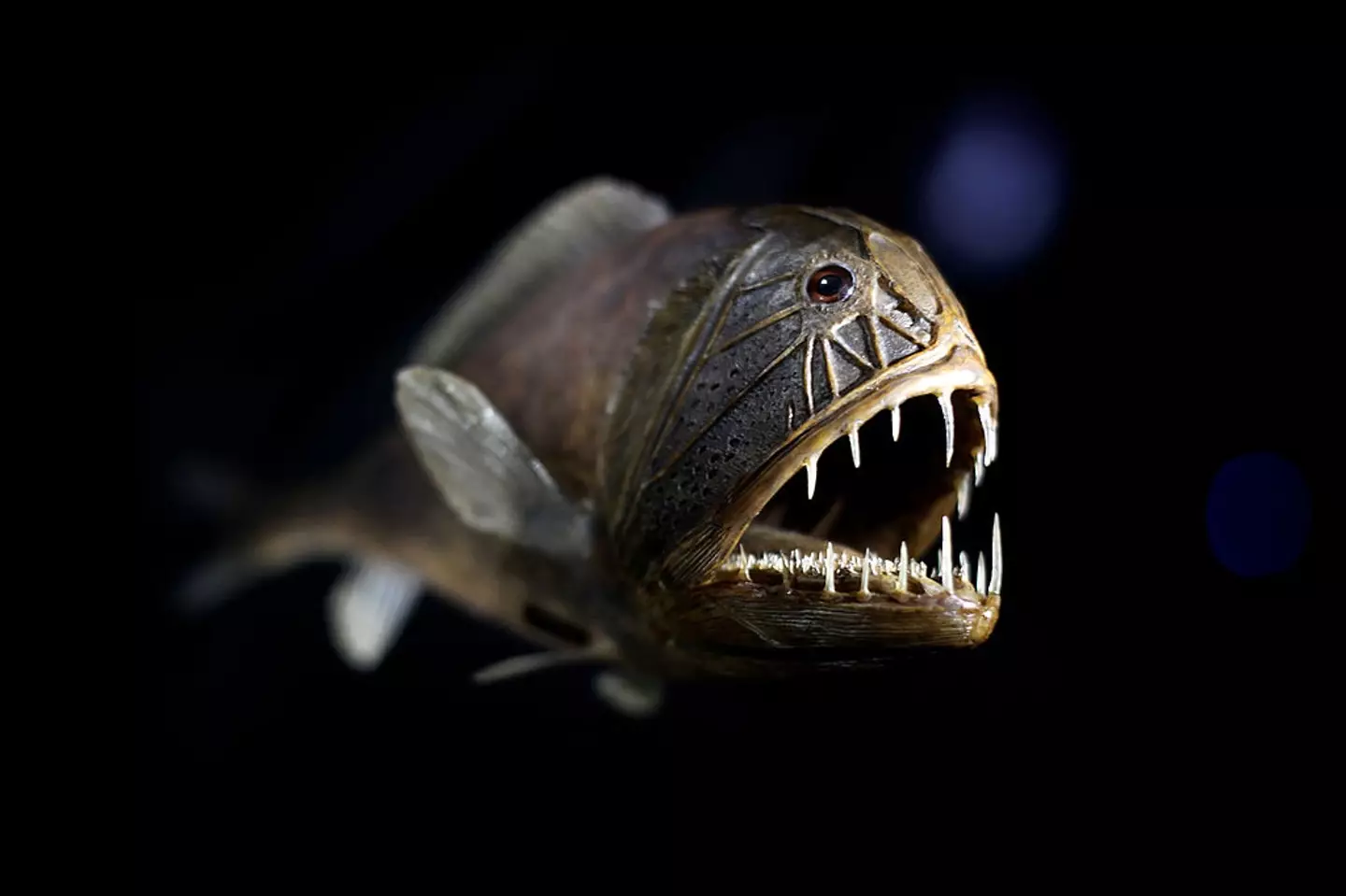
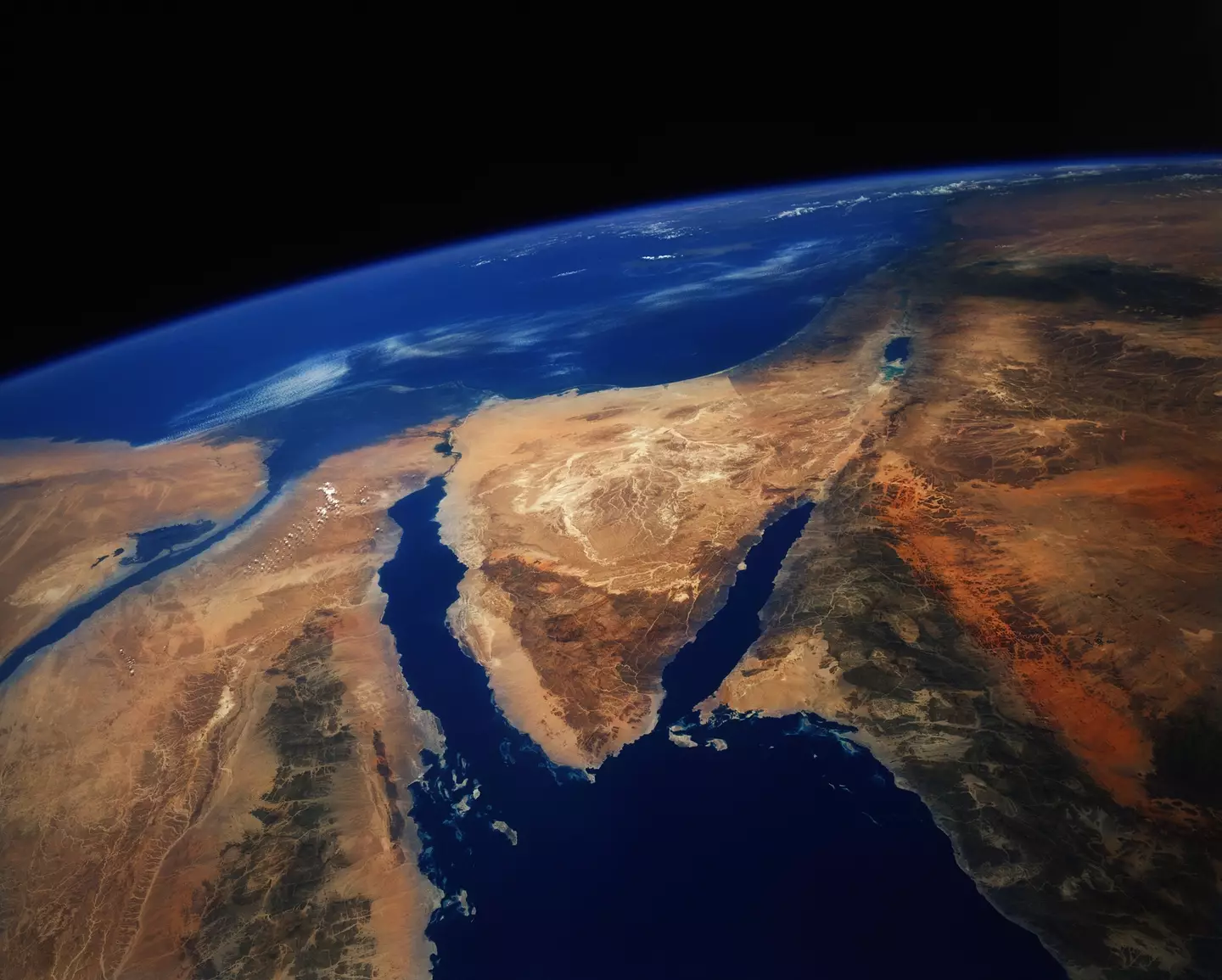

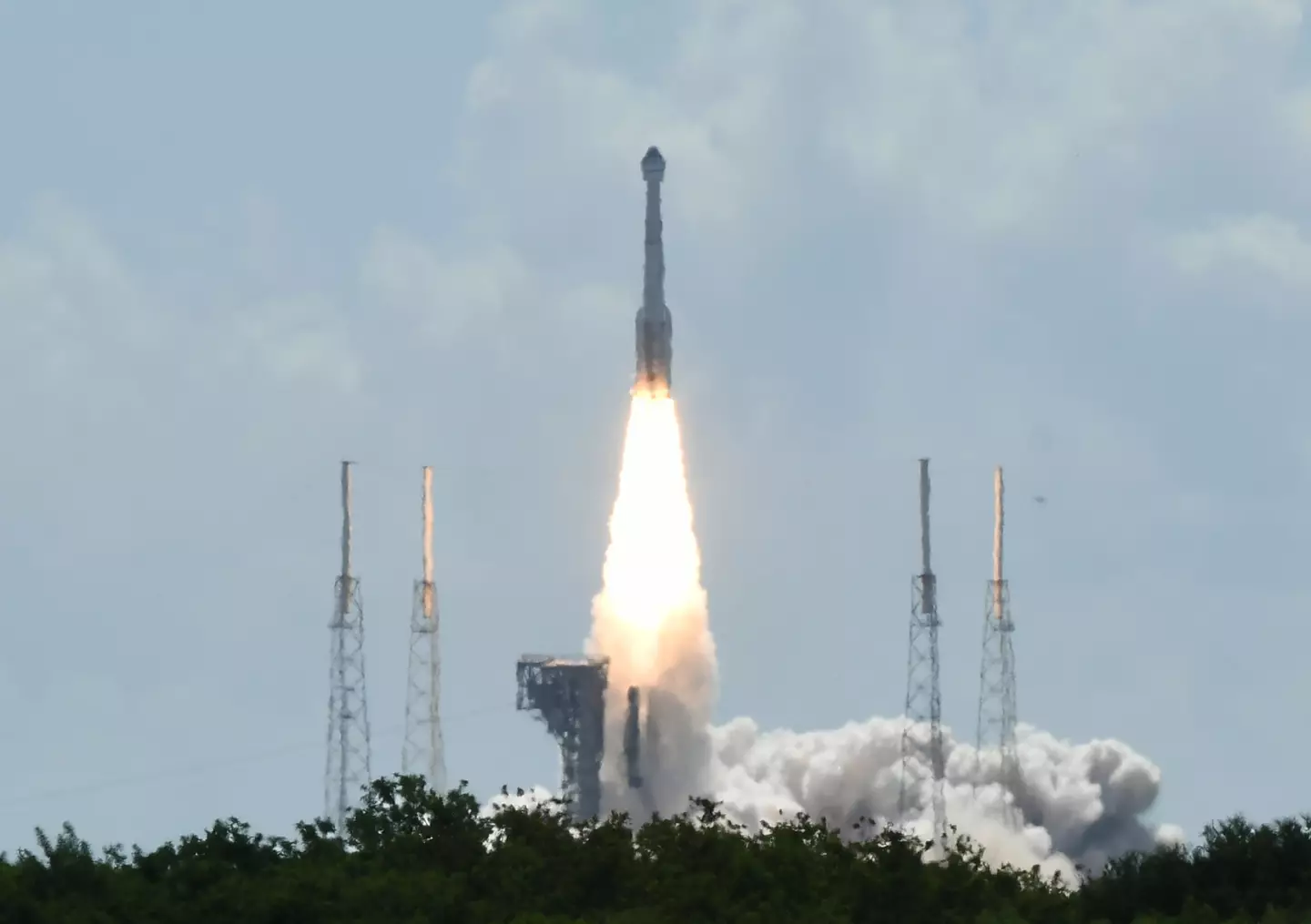
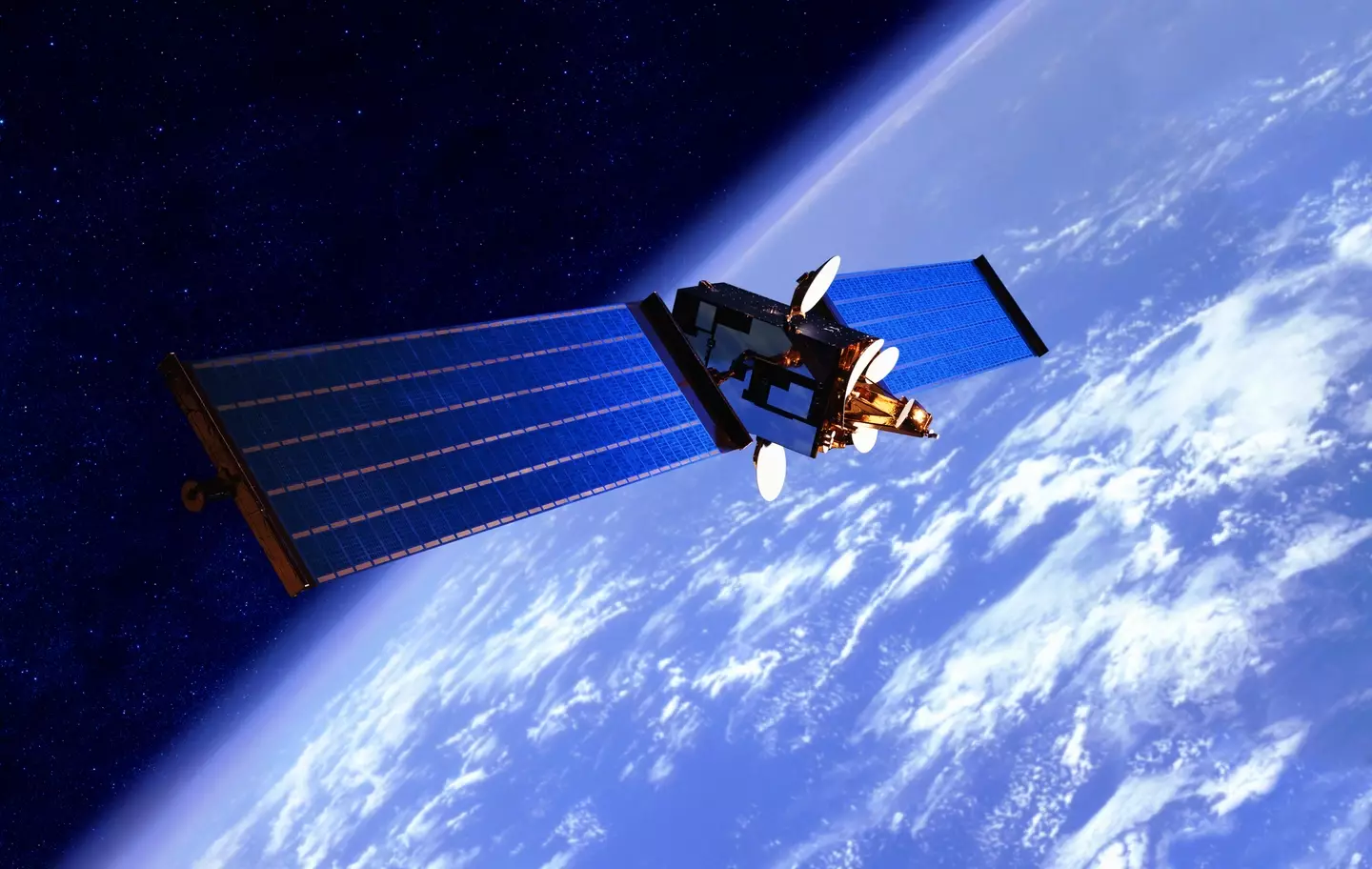


NASA astronaut Ronald Garan has orbited Earth 2,842 times during which he experienced the 'Overview Effect'
We're all 'living a lie', according to an astronaut that hurtled through space for a whopping 178 days.
I'm sure if we all spent that many days orbiting Earth at a speed of around 17,500mph then the way we see things would drastically change.
Well, it certainly did for the former NASA spaceman Ronald Garan who orbited our planet a staggering 2,842 times as he toured global shuttles - including the International Space Station (ISS).
Speaking to Big Think, he said: "When we see our planet from the perspective of space, certain things become undeniably clear.

Astronaut Ronald Garan believes we're 'living a lie' (Erika Goldring/Getty Images)
"We keep trying to deal with issues such as global warning, deforestation, biodiversity loss as stand alone issues, when in reality they're just symptoms of the underlying root problem.
"The problem is that we don't see ourselves as planetary."
He explained that when he 'looked out the window' from the ISS he saw the 'paparazzi like flashes' of lightening storms, 'dancing curtains of Auroras' and the 'unbelievable thinness of our planets atmosphere'.
He continued: "In that moment I was hit with the sobering realization that that paper-thin layer keeps every single living thing on our planet alive.
Play
"I saw an iridescent biosphere teaming with life, I didn't see an economy, but since our human-made systems treat everything including the very life-support systems of our planet as the wholly owned subsidiary of the global economy, it's obvious from the vantage point of space that we're living a lie."
Yes, the 62-year-old believes that mankind has the completely wrong outlook on day-to-day life - but it was only due to his literal out-of-this-world experience that he came to that conclusion.
The ex-astronaut turned philosopher grave a great insight into just how he envisions his new take on life.
Garan explained: "I wake up every morning on my bed, but I also wake up on a planet.
"In the long-term I'm very optimistic because I do see quite clearly a blossoming unity spreading across out planet, a blossoming awareness of our interdependent nature.
"We keep trying to deal with issues such as global warning, deforestation, biodiversity loss as stand alone issues, when in reality they're just symptoms of the underlying root problem.
"The problem is that we don't see ourselves as planetary."
He explained that when he 'looked out the window' from the ISS he saw the 'paparazzi like flashes' of lightening storms, 'dancing curtains of Auroras' and the 'unbelievable thinness of our planets atmosphere'.
He continued: "In that moment I was hit with the sobering realization that that paper-thin layer keeps every single living thing on our planet alive.
Play
"I saw an iridescent biosphere teaming with life, I didn't see an economy, but since our human-made systems treat everything including the very life-support systems of our planet as the wholly owned subsidiary of the global economy, it's obvious from the vantage point of space that we're living a lie."
Yes, the 62-year-old believes that mankind has the completely wrong outlook on day-to-day life - but it was only due to his literal out-of-this-world experience that he came to that conclusion.
The ex-astronaut turned philosopher grave a great insight into just how he envisions his new take on life.
Garan explained: "I wake up every morning on my bed, but I also wake up on a planet.
"In the long-term I'm very optimistic because I do see quite clearly a blossoming unity spreading across out planet, a blossoming awareness of our interdependent nature.

Garan states that seeing Earth from space puts into perspective how connected we are (NASA)
"That awareness will eventually reach critical mass, and when it reaches critical mass then we'll be able to solve the problems facing our planet."
He continued: "It should give us courage during these times to keep doing what we know to be right and to not give up hope because we are going to see the dawn.
Terrifying animation shows what would happen if the moon crashed into the Earth
"And when we can evolve from a two-dimensional 'us versus them' mindset and embrace the true multidimensional reality of the universe that we live in - that's when we will no longer be floating in darkness, we're going to leave the cave.
"It's a future that we will all want to be a part of - that's our true calling."Featured Image Credit: Big Think/YouTube
Topics: Space, Earth, Nature, Science
Astronaut who spent 178 days in space reveals man-made structure he saw on Earth which made him realize the 'big lie'
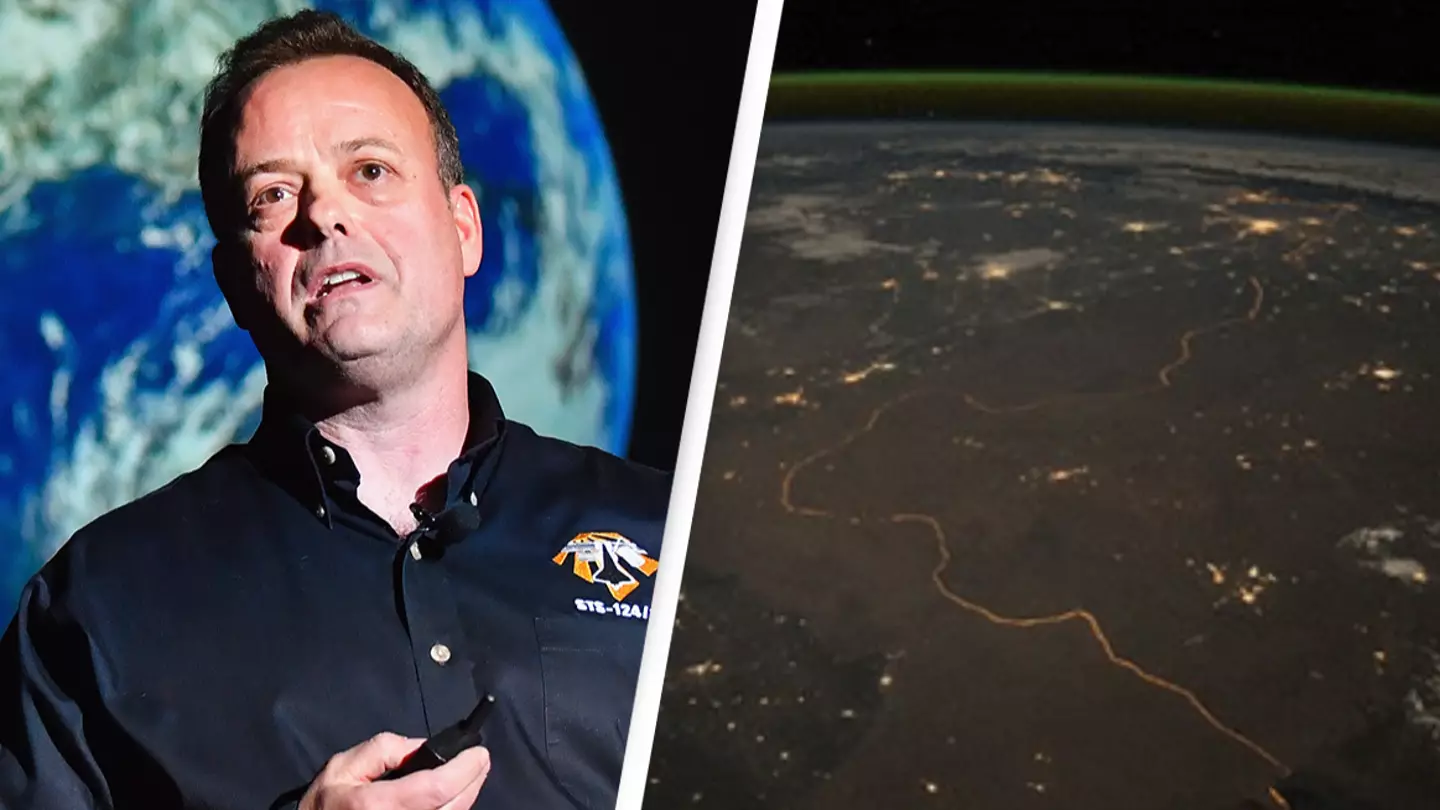
Ronald Garan has explained how viewing the Earth from space gave him the 'overview effect'
Former astronaut Ronald Garan came to a both haunting and beautiful conclusion while staring at Earth from space.
While a space cadet for NASA, Ronald has spent a total of 178 days in space and has come to a crushing realization in the process.
Now before you flat-earthers get excited, no he didn’t see the world was flat or that we are riding on the back of a cosmic turtle or some other odd theory.
In reality, he came to a realization about humanity. Ronald believes we are all living a lie and the 62-year-old might have a point.
Having flown 71 million miles in 2,842 orbits throughout his career at NASA, Ronald has surely felt the 'overview effect' more than once.
The term is used for a phenomenon astronauts go through as they get an 'unexpected and overwhelming feeling of emotion' looking at Earth from space.
"That awareness will eventually reach critical mass, and when it reaches critical mass then we'll be able to solve the problems facing our planet."
He continued: "It should give us courage during these times to keep doing what we know to be right and to not give up hope because we are going to see the dawn.
Terrifying animation shows what would happen if the moon crashed into the Earth
"And when we can evolve from a two-dimensional 'us versus them' mindset and embrace the true multidimensional reality of the universe that we live in - that's when we will no longer be floating in darkness, we're going to leave the cave.
"It's a future that we will all want to be a part of - that's our true calling."Featured Image Credit: Big Think/YouTube
Topics: Space, Earth, Nature, Science
Astronaut who spent 178 days in space reveals man-made structure he saw on Earth which made him realize the 'big lie'

Ronald Garan has explained how viewing the Earth from space gave him the 'overview effect'
Former astronaut Ronald Garan came to a both haunting and beautiful conclusion while staring at Earth from space.
While a space cadet for NASA, Ronald has spent a total of 178 days in space and has come to a crushing realization in the process.
Now before you flat-earthers get excited, no he didn’t see the world was flat or that we are riding on the back of a cosmic turtle or some other odd theory.
In reality, he came to a realization about humanity. Ronald believes we are all living a lie and the 62-year-old might have a point.
Having flown 71 million miles in 2,842 orbits throughout his career at NASA, Ronald has surely felt the 'overview effect' more than once.
The term is used for a phenomenon astronauts go through as they get an 'unexpected and overwhelming feeling of emotion' looking at Earth from space.

Now that really is a once in a lifetime view (Getty Stock Image)
This has likely had an impact on Ronald on one occasion when he was aboard the International Space Station and spotted a long line of lights stretching across Asia.
He then realized it was a man-made structure of the border between India and Pakistan.
In a TED talk from 2016, he said: "Initially, I wrote this off as a strange reflection of moonlight on a river.
"I was very intrigued. It turns out that this was not a natural reflection at all.
"I've always said that you can't see borders from space, apparently I was wrong.
"The Earth, when viewed from space, almost always looks beautiful and peaceful.
"But was this an example of man made changes to the landscape that was clearly visible from space."
This has tied into his belief that humans are living a lie and have the wrong outlook on day-to-day life.
In an interview with Big Think, he explained: "We keep trying to deal with issues such as global warming, deforestation, biodiversity loss as stand alone issues when in reality they're just symptoms of the underlying root problem and the problem is, that we don't see ourselves as planetary”.
This has likely had an impact on Ronald on one occasion when he was aboard the International Space Station and spotted a long line of lights stretching across Asia.
He then realized it was a man-made structure of the border between India and Pakistan.
In a TED talk from 2016, he said: "Initially, I wrote this off as a strange reflection of moonlight on a river.
"I was very intrigued. It turns out that this was not a natural reflection at all.
"I've always said that you can't see borders from space, apparently I was wrong.
"The Earth, when viewed from space, almost always looks beautiful and peaceful.
"But was this an example of man made changes to the landscape that was clearly visible from space."
This has tied into his belief that humans are living a lie and have the wrong outlook on day-to-day life.
In an interview with Big Think, he explained: "We keep trying to deal with issues such as global warming, deforestation, biodiversity loss as stand alone issues when in reality they're just symptoms of the underlying root problem and the problem is, that we don't see ourselves as planetary”.

Ronald has flown 71 million miles in 2,842 orbits throughout his career at NASA. (Erika Goldring/Getty Images)
"When I looked out of the window of the International Space Station, I saw the paparazzi-like flashes of lightening storms, I saw dancing curtains of auroras that seemed so close it was as if we could reach out and touch them and I saw the unbelievable thinness of our planet's atmosphere.
"In that moment I was hit by the sobering realization."
Ronald came to the understanding that every living thing on Earth was being kept alive by a very thin layer and people don’t realize just how connected we all are.
"I saw an iridescent biosphere teaming with life, I didn't see an economy, but since our human-made systems treat everything including the very life-support systems of our planet as the [...] subsidiary of the global economy, it's obvious from the vanish point of space that we're living a lie," he added.
Ronald has urged people to shift their thinking for the overall benefit of humanity and move from thinking ‘economy, society, planet to planet, society, economy.’Featured Image Credit: Erika Goldring/Getty Images/NASA
Topics: Space, NASA, Technology
Scientists make chilling discovery after finally reaching the bottom of the Red Sea
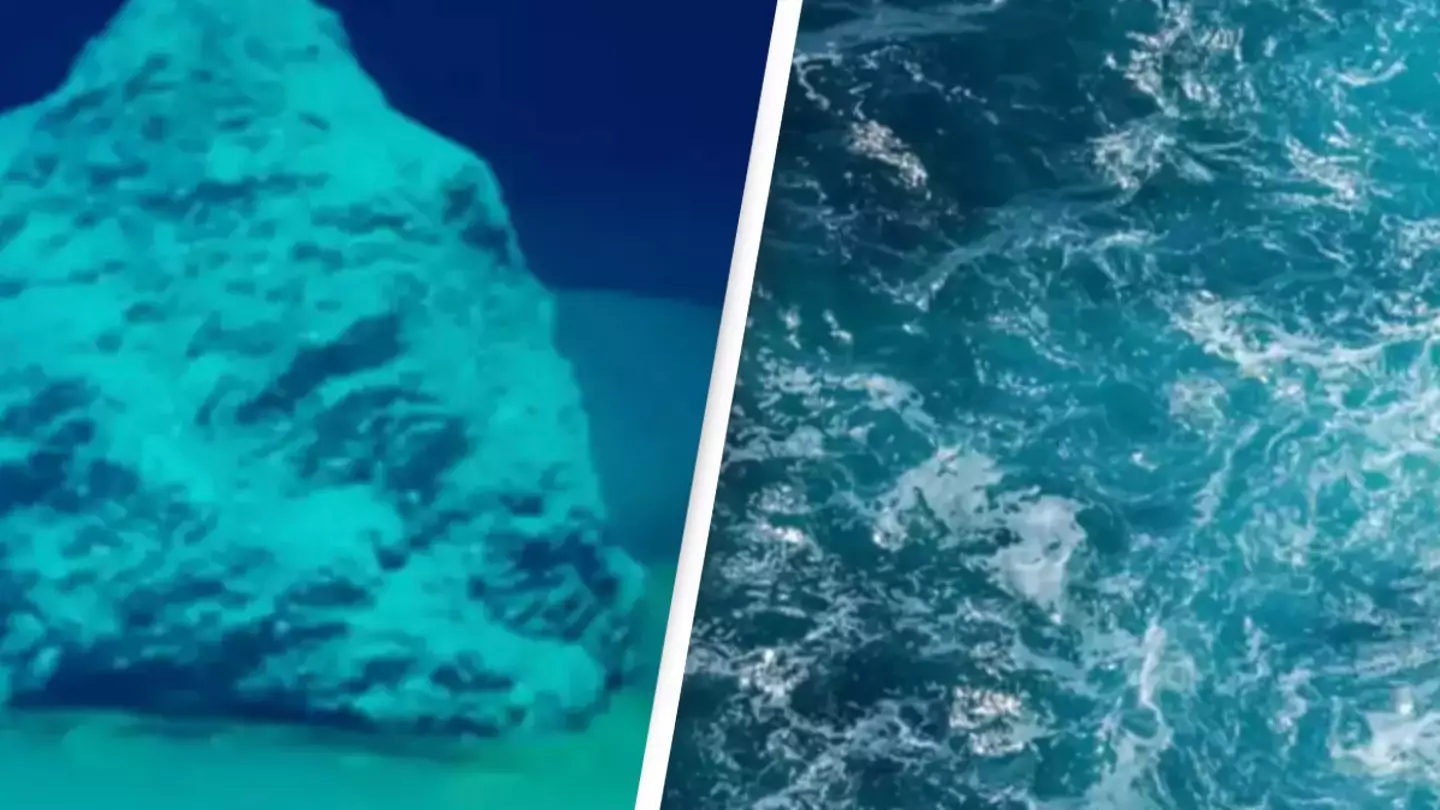
They discovered a place where most animals 'are immediately stunned or killed'
Only five percent of the ocean has been explored... and with 'death pools' discovered on the floor of the Red Sea, I understand why.
OK, obviously the potential that something scary lurks in the deepest darkest parts of the ocean isn't what is preventing mankind from exploring just shy of 70 percent of the planet.
But, I'm sure it won't help.
The deep sea holds many frightful fish like the fangtooth, gulper eel, goblin shark, vampire squid and anglerfish, but none are more terrifying than the unknown.
With those beasts you at least know what you face - OK, the vampire squid isn't really that scary but sounds it.
Well, research is being carried out by scientists looking into the bottom of the Red Sea, which is located in the Middle East between Africa and Asia.
A research team sent divers and probes down to explore, but what they actually uncovered was 'death pools'.
"When I looked out of the window of the International Space Station, I saw the paparazzi-like flashes of lightening storms, I saw dancing curtains of auroras that seemed so close it was as if we could reach out and touch them and I saw the unbelievable thinness of our planet's atmosphere.
"In that moment I was hit by the sobering realization."
Ronald came to the understanding that every living thing on Earth was being kept alive by a very thin layer and people don’t realize just how connected we all are.
"I saw an iridescent biosphere teaming with life, I didn't see an economy, but since our human-made systems treat everything including the very life-support systems of our planet as the [...] subsidiary of the global economy, it's obvious from the vanish point of space that we're living a lie," he added.
Ronald has urged people to shift their thinking for the overall benefit of humanity and move from thinking ‘economy, society, planet to planet, society, economy.’Featured Image Credit: Erika Goldring/Getty Images/NASA
Topics: Space, NASA, Technology
Scientists make chilling discovery after finally reaching the bottom of the Red Sea

They discovered a place where most animals 'are immediately stunned or killed'
Only five percent of the ocean has been explored... and with 'death pools' discovered on the floor of the Red Sea, I understand why.
OK, obviously the potential that something scary lurks in the deepest darkest parts of the ocean isn't what is preventing mankind from exploring just shy of 70 percent of the planet.
But, I'm sure it won't help.
The deep sea holds many frightful fish like the fangtooth, gulper eel, goblin shark, vampire squid and anglerfish, but none are more terrifying than the unknown.
With those beasts you at least know what you face - OK, the vampire squid isn't really that scary but sounds it.
Well, research is being carried out by scientists looking into the bottom of the Red Sea, which is located in the Middle East between Africa and Asia.
A research team sent divers and probes down to explore, but what they actually uncovered was 'death pools'.

Fangtooth fish can be found at the bottom of the ocean... or at the Natural History Museum in London, where this one was on display (Dan Kitwood/Getty Images)
Just the name of them sends chills down your spine, but what are they?
Discovered at the depth of the sea inlet, part of the Indian Ocean, they are holes that go beyond the sea bed and they hold no oxygen at all and are extraordinarily salty, so most life can't survive there.
Why is that frightening? Well, there are opportunistic predators that lurk there ready to snap up breakfast, lunch and dinner - if any bamboozled creatures happen upon them.
Professor Sam Purkis, chair of the Department of Marine Geosciences at the University of Miami, explained fish that stumble into the brine pools are 'immediately stunned or killed', and predators camp out near the holes to 'feed on the unlucky'.
But it turns out the discovery of these chilling, mysterious trenches hold vital information into life on Earth as we know it.
Purkis said: "Our current understanding is that life originated on Earth in the deep sea, almost certainly in anoxic - without oxygen - conditions.
Just the name of them sends chills down your spine, but what are they?
Discovered at the depth of the sea inlet, part of the Indian Ocean, they are holes that go beyond the sea bed and they hold no oxygen at all and are extraordinarily salty, so most life can't survive there.
Why is that frightening? Well, there are opportunistic predators that lurk there ready to snap up breakfast, lunch and dinner - if any bamboozled creatures happen upon them.
Professor Sam Purkis, chair of the Department of Marine Geosciences at the University of Miami, explained fish that stumble into the brine pools are 'immediately stunned or killed', and predators camp out near the holes to 'feed on the unlucky'.
But it turns out the discovery of these chilling, mysterious trenches hold vital information into life on Earth as we know it.
Purkis said: "Our current understanding is that life originated on Earth in the deep sea, almost certainly in anoxic - without oxygen - conditions.

The Red Sea pictured from space (Getty stock image)
"Studying this community hence allows a glimpse into the sort of conditions where life first appeared on our planet, and might guide the search for life on other 'water worlds' in our solar system and beyond."
So unearthing these pools will actually aid in space exploration.
What also offers a great insight is into 'life before life' is the fact that there are so few living things in these pits, meaning we have a rare window into the distant past.
He added: "Ordinarily, these animals bioturbate or churn up the seabed, disturbing the sediments that accumulate there. Not so with the brine pools. Here, any sedimentary layers that settle to the bed of the brine pool remain exquisitely intact."
I'm sure we're going to be hearing a lot more about these death pools, and as long as I'm not exploring myself then... bring it on nature.Featured Image Credit: Getty stock photo/YouTube/Ocean X
Topics: Science, Nature, Earth, Space
Impact 240 days in space could have on ‘stranded’ astronauts' bodies
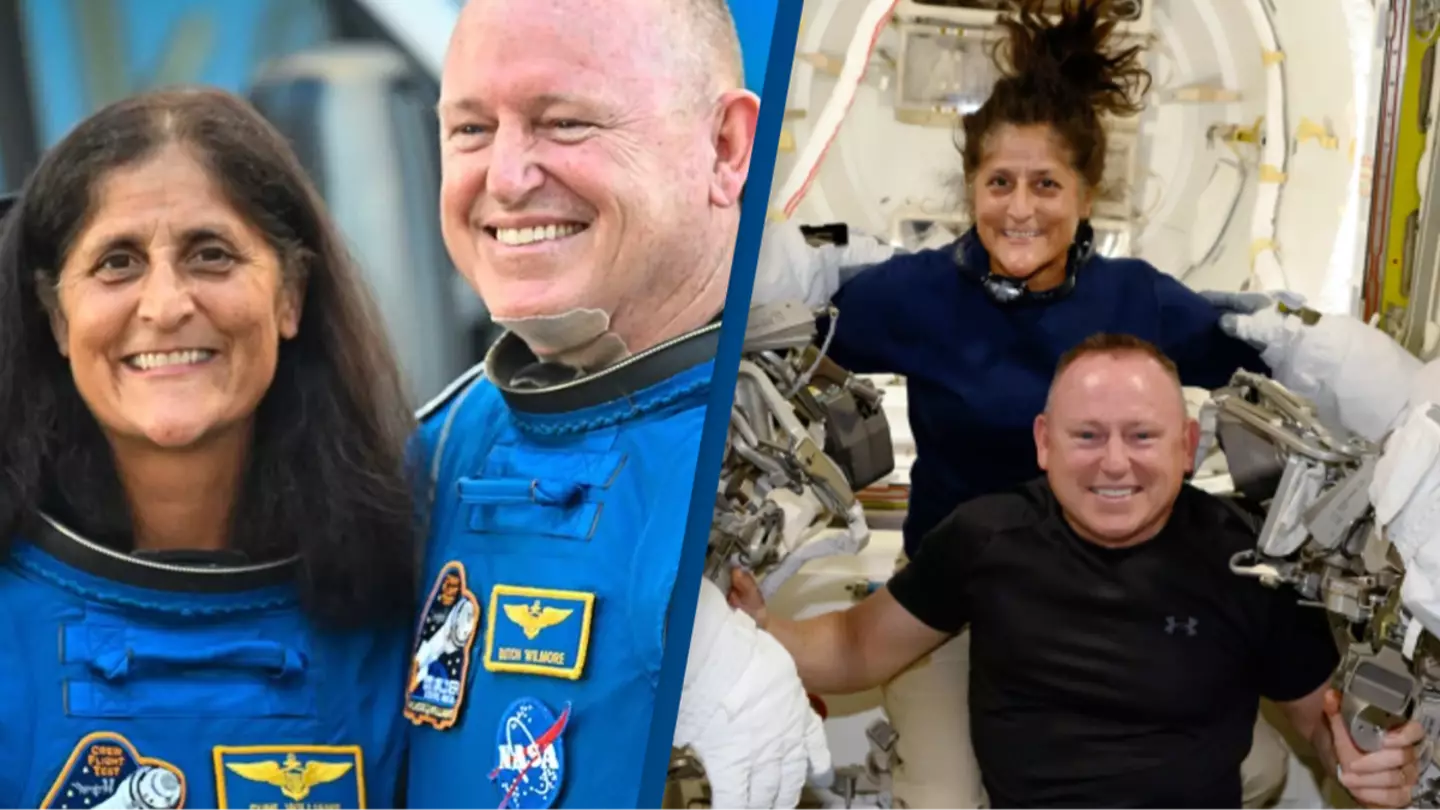
Sunita Williams and Butch Wilmore have been stuck in space for over two months
The two astronauts that have been left 'stranded' in space could endure a series of physiological affects from being in orbit for a prolonged period of time.
Sunita Williams and Butch Wilmore left Earth for the International Space Station (ISS) on June 5 and, while the pair were only supposed to be there for eight days, it's predicted that they'll be there for eight months instead.
Their extended stay comes after the crew discovered worrying helium leaks and thruster failures, making it too risky for the pair to return home in the Boeing capsule as originally planned.
It's now expected that Williams and Wilmore will return to Earth with SpaceX's Crew-9 return flight in February 2025.
They may return sooner if they're able to repair the Boeing Starliner, however.
While NASA have said that the duo are 'doing great' in an update issued on August 15, Williams and Wilmore could find that their physiology is impacted after being stuck in space for so long.
Muscle mass
After just a two-week space flight, a person can lose 20 percent of their muscle mass. On longer missions spanning to up six months, this percentage can increase to 30, as per a 2009 study titled: 'Acclimation during space flight: effects on human physiology'.
The most affected are postural muscles (such as back, neck, calves and quadriceps) as they're not being used to keep the body upright in a gravitational environment, i.e on Earth.
"Studying this community hence allows a glimpse into the sort of conditions where life first appeared on our planet, and might guide the search for life on other 'water worlds' in our solar system and beyond."
So unearthing these pools will actually aid in space exploration.
What also offers a great insight is into 'life before life' is the fact that there are so few living things in these pits, meaning we have a rare window into the distant past.
He added: "Ordinarily, these animals bioturbate or churn up the seabed, disturbing the sediments that accumulate there. Not so with the brine pools. Here, any sedimentary layers that settle to the bed of the brine pool remain exquisitely intact."
I'm sure we're going to be hearing a lot more about these death pools, and as long as I'm not exploring myself then... bring it on nature.Featured Image Credit: Getty stock photo/YouTube/Ocean X
Topics: Science, Nature, Earth, Space
Impact 240 days in space could have on ‘stranded’ astronauts' bodies

Sunita Williams and Butch Wilmore have been stuck in space for over two months
The two astronauts that have been left 'stranded' in space could endure a series of physiological affects from being in orbit for a prolonged period of time.
Sunita Williams and Butch Wilmore left Earth for the International Space Station (ISS) on June 5 and, while the pair were only supposed to be there for eight days, it's predicted that they'll be there for eight months instead.
Their extended stay comes after the crew discovered worrying helium leaks and thruster failures, making it too risky for the pair to return home in the Boeing capsule as originally planned.
It's now expected that Williams and Wilmore will return to Earth with SpaceX's Crew-9 return flight in February 2025.
They may return sooner if they're able to repair the Boeing Starliner, however.
While NASA have said that the duo are 'doing great' in an update issued on August 15, Williams and Wilmore could find that their physiology is impacted after being stuck in space for so long.
Muscle mass
After just a two-week space flight, a person can lose 20 percent of their muscle mass. On longer missions spanning to up six months, this percentage can increase to 30, as per a 2009 study titled: 'Acclimation during space flight: effects on human physiology'.
The most affected are postural muscles (such as back, neck, calves and quadriceps) as they're not being used to keep the body upright in a gravitational environment, i.e on Earth.

Sunita Williams and Butch Wilmore's mission was only supposed to be eight days. (MIGUEL J. RODRIGUEZ CARRILLO/AFP via Getty Images)
Lead of Life Sciences at the European Space Agency, Angelique Van Ombergen, explained in a YouTube clip: "When astronauts spend several months in space, they can lose up to 20% of their muscle mass, and also their bone density decreases.
"Since the whole body is exposed to microgravity, the heart doesn't need to pump around as much blood as it used to on Earth and the cardiovascular system deteriorates."
Motion sickness
Astronauts are known to suffer something known as neurovestibular acclimation while in space - a term used to describe the neurological disturbances that astronauts experience during space flight due to microgravity.
This typically effects them during the first couple of days into their space flight, as well as when they readjust to Earth's gravitational pull when they return home, according to the 2009 study.
Symptoms of this 'sickness' include: facial pallor, cold sweating, stomach awareness, nausea and, in some cases, vomiting.
Lead of Life Sciences at the European Space Agency, Angelique Van Ombergen, explained in a YouTube clip: "When astronauts spend several months in space, they can lose up to 20% of their muscle mass, and also their bone density decreases.
"Since the whole body is exposed to microgravity, the heart doesn't need to pump around as much blood as it used to on Earth and the cardiovascular system deteriorates."
Motion sickness
Astronauts are known to suffer something known as neurovestibular acclimation while in space - a term used to describe the neurological disturbances that astronauts experience during space flight due to microgravity.
This typically effects them during the first couple of days into their space flight, as well as when they readjust to Earth's gravitational pull when they return home, according to the 2009 study.
Symptoms of this 'sickness' include: facial pallor, cold sweating, stomach awareness, nausea and, in some cases, vomiting.

The NASA Boeing CST-100 Starliner Spacecraft was launched on June 5. (Paul Hennessy/Anadolu via Getty Images)
Bone mass
For each month that passes in space, astronauts can lose one to two percent of their bone mass.
This is in comparison to bone mass loss being at a rate of 0.5%-1% every year for elderly people on Earth, as per BBC.
In a bid to combat this, Williams and Wilmore will have to do 2.5 hours of exercise a day.
Space radiation
On Earth, humans are shielded by space radiation by planet’s magnetic field but while in space astronauts are exposed to varied and increased levels of radiation, says NASA.
"Three major sources contribute to the space radiation environment: particles trapped in Earth’s magnetic field, solar energetic particles from the Sun, and galactic cosmic rays," the website further explains.
Such radiation can increase a person's risk of risk of cancer and degenerative diseases such as heart disease if an astronaut is exposed to it for long periods of time.Featured Image Credit: MIGUEL J. RODRIGUEZ CARRILLO/AFP via Getty Images/NASA
Topics: Space, Health, Science, NASA, News
Astronaut reveals his 'sobering realization' when he saw the earth from space
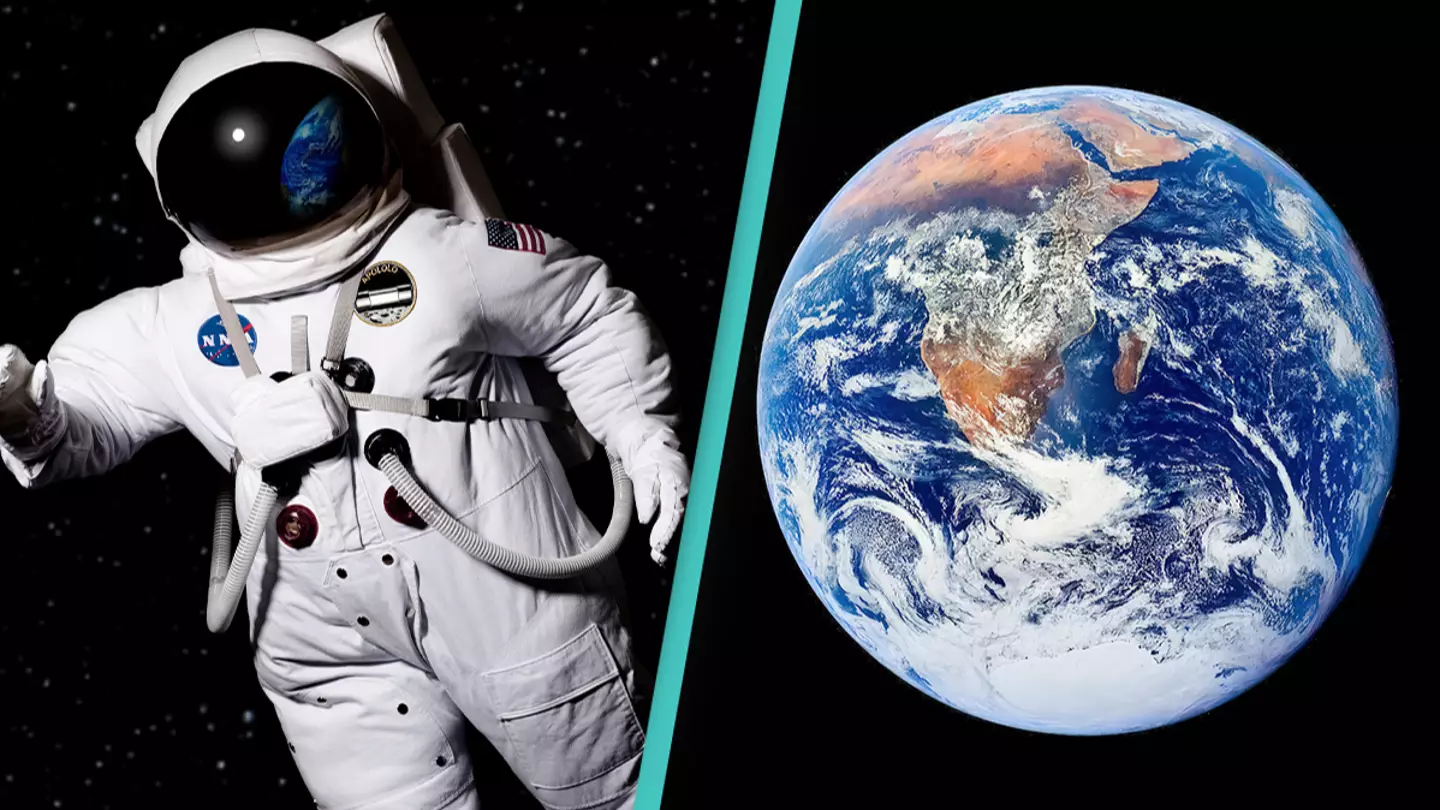
Astronaut Ron Garan experienced a phenomena known as the 'overview effect'
Astronaut Ron Garan has revealed the sobering effect of seeing planet Earth from space for the first time.
The luxury of seeing planet Earth from space is something that very few of us will experience our lifetime, unless of course Elon Musk gets a move on with SpaceX.
Although we have plenty of photos and videos of our home planet readily available at the click of a button, it's still pretty hard to fathom what it would be like the real thing with our own eyes.
In fact it's pretty weird to imagine being off Earth at all.
Turns out this isn't an uncommon thought either, with many astronauts who have visited space reporting that they have had 'sobering' realizations about their home after seeing it from the window of a spaceship.
Often referred to as the 'Overview Effect', the phenomena has been described as a 'unexpected and overwhelming emotion' which astronauts experience during space travel.
Many have even returned to Earth with a newfound sense of appreciation for the planet's beauty and preciousness.
Explaining his first-hand experience with the Overview Effect in an interview with The Big Think, Garan said that seeing Earth from space made him realise how connected everyone and how problems such as global warming, deforestation, biodiversity loss should be viewed as 'planetary' issues.
For each month that passes in space, astronauts can lose one to two percent of their bone mass.
This is in comparison to bone mass loss being at a rate of 0.5%-1% every year for elderly people on Earth, as per BBC.
In a bid to combat this, Williams and Wilmore will have to do 2.5 hours of exercise a day.
Space radiation
On Earth, humans are shielded by space radiation by planet’s magnetic field but while in space astronauts are exposed to varied and increased levels of radiation, says NASA.
"Three major sources contribute to the space radiation environment: particles trapped in Earth’s magnetic field, solar energetic particles from the Sun, and galactic cosmic rays," the website further explains.
Such radiation can increase a person's risk of risk of cancer and degenerative diseases such as heart disease if an astronaut is exposed to it for long periods of time.Featured Image Credit: MIGUEL J. RODRIGUEZ CARRILLO/AFP via Getty Images/NASA
Topics: Space, Health, Science, NASA, News
Astronaut reveals his 'sobering realization' when he saw the earth from space

Astronaut Ron Garan experienced a phenomena known as the 'overview effect'
Astronaut Ron Garan has revealed the sobering effect of seeing planet Earth from space for the first time.
The luxury of seeing planet Earth from space is something that very few of us will experience our lifetime, unless of course Elon Musk gets a move on with SpaceX.
Although we have plenty of photos and videos of our home planet readily available at the click of a button, it's still pretty hard to fathom what it would be like the real thing with our own eyes.
In fact it's pretty weird to imagine being off Earth at all.
Turns out this isn't an uncommon thought either, with many astronauts who have visited space reporting that they have had 'sobering' realizations about their home after seeing it from the window of a spaceship.
Often referred to as the 'Overview Effect', the phenomena has been described as a 'unexpected and overwhelming emotion' which astronauts experience during space travel.
Many have even returned to Earth with a newfound sense of appreciation for the planet's beauty and preciousness.
Explaining his first-hand experience with the Overview Effect in an interview with The Big Think, Garan said that seeing Earth from space made him realise how connected everyone and how problems such as global warming, deforestation, biodiversity loss should be viewed as 'planetary' issues.

Many astronauts report experiencing the Overview Effect. (Getty Stock Images)
Garan went on to explain that he believes society as a collective needs to shift the way it thinks in order to continue our 'evolutionary process'.
"It's obvious from the vantage point of space that we're living a lie. We need to move from thinking economy, society, planet to planet, society, economy," he said.
"There's this light bulb that pops up where they realize how interconnected and interdependent we all are."
Comparing the experience to the allegory of Plato's Cave, Garan said mankind needs to work out a way to 'leave the cave' and shift our perspective.
"We're not going to have peace on Earth until we recognize the basic fact of the interrelated structure of all reality," he added.
Now anyone who's quick to brush off Garan's comments as idealistic should note that he is not the only person who has gone on record to talk about his experience with the Overview Effect, with several other astronauts saying similar things.
Garan went on to explain that he believes society as a collective needs to shift the way it thinks in order to continue our 'evolutionary process'.
"It's obvious from the vantage point of space that we're living a lie. We need to move from thinking economy, society, planet to planet, society, economy," he said.
"There's this light bulb that pops up where they realize how interconnected and interdependent we all are."
Comparing the experience to the allegory of Plato's Cave, Garan said mankind needs to work out a way to 'leave the cave' and shift our perspective.
"We're not going to have peace on Earth until we recognize the basic fact of the interrelated structure of all reality," he added.
Now anyone who's quick to brush off Garan's comments as idealistic should note that he is not the only person who has gone on record to talk about his experience with the Overview Effect, with several other astronauts saying similar things.

Garan states that seeing Earth from space puts into perspective how connected we are. (NASA)
Apollo 11 crew member Michael Collins recalled how surprising it was to see Earth appear so 'fragile' and 'tiny' while Apollo 14's Edgar Mitchell said the experience gave him an 'explosion of awareness'.
The phenomena was even experienced by Star Trek's William Shatner on a sub-orbital space flight, with the actor saying: "The contrast between the vicious coldness of space and the warm nurturing of Earth below filled me with overwhelming sadness. Every day, we are confronted with the knowledge of further destruction of Earth at our hands... things that took five billion years to evolve, and suddenly we will never see them again because of the interference of mankind."Featured Image Credit: Getty Stock Images
Topics: Space, Earth
Apollo 11 crew member Michael Collins recalled how surprising it was to see Earth appear so 'fragile' and 'tiny' while Apollo 14's Edgar Mitchell said the experience gave him an 'explosion of awareness'.
The phenomena was even experienced by Star Trek's William Shatner on a sub-orbital space flight, with the actor saying: "The contrast between the vicious coldness of space and the warm nurturing of Earth below filled me with overwhelming sadness. Every day, we are confronted with the knowledge of further destruction of Earth at our hands... things that took five billion years to evolve, and suddenly we will never see them again because of the interference of mankind."Featured Image Credit: Getty Stock Images
Topics: Space, Earth

